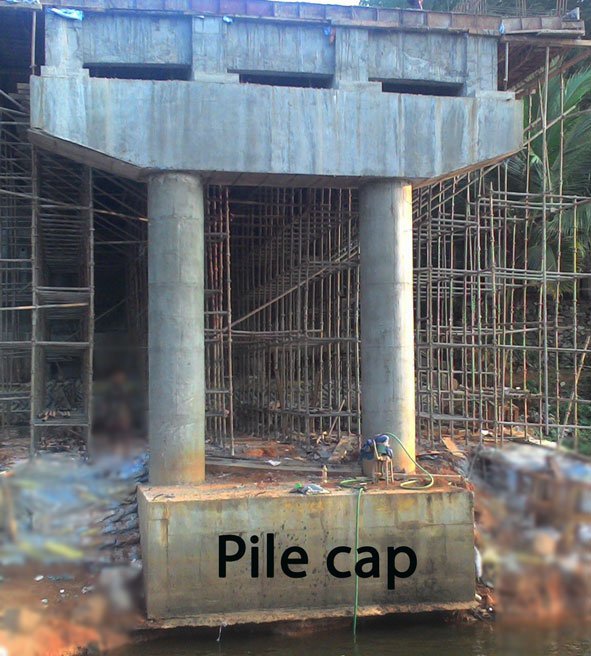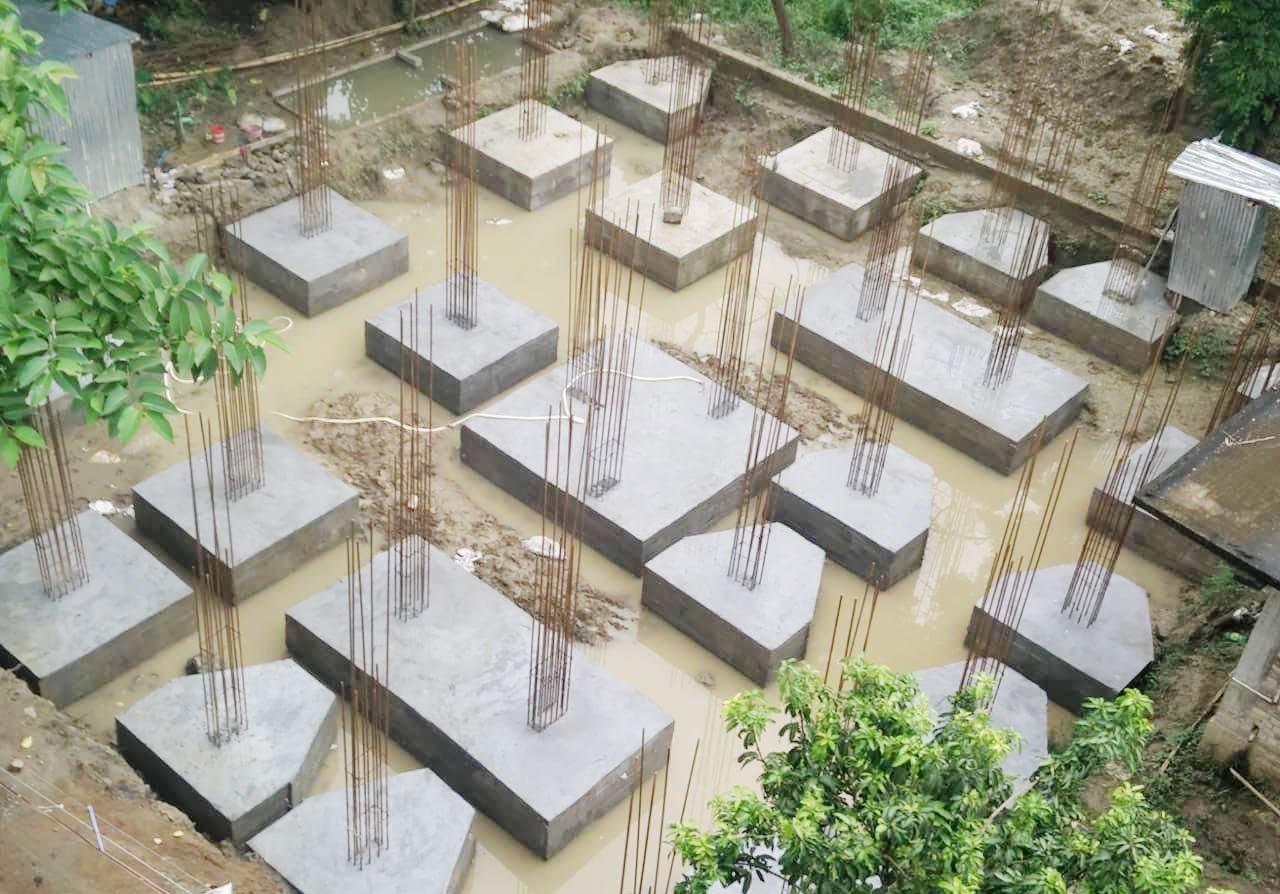
A pile cap is a mass concrete structure contains more piles embeds in it. A group of pill drives into clay, soft, and loose soils to provide a strong, stable and suitable foundation.

The pile designs considering the punching shea around the heads of the piles and column base. It also designs for bending moment due to the transmission of loads from columns to the individual piles.
Pile cap Necessity
Pile is necessary when the bearing capacity of soil below the structure is insufficient for a spread footing. It transfers the load to deeper, firmer strata. Piles used where the soil particularly affects by seasonal changes, to transfer the load below the level of such influence.

The load support exceeds the bearing capacity of a single pile, a group of piles uses.
The group capped by a spread footing or a cap to distribute load to all piles in the group. Where there are a large number of closely space piles, provide individual caps. It is more economical to provide just one large cap, forming a piled raft.
SHAPES
The shape and plan dimensions of the pile cap depend on two factors.
- Number of piles in the group and
- The spacing between each pile.
The most common shapes are
1. Number of piles in the group
A group of piles accommodates in a pile cap.
Two pile

In two pile cap, two piles are embeds in one pile cap. The picture shows a two and one pile cap PCC arrangments for pile cap.
Three pile
The picture shows a typical three pile arrangement PCC for pile cap.

Three pile cap
The image shows a three pile cap concreting.

The shapes of the pile caps minimize the plan area for symmetrical pile arrangement about the load.
It is overhand the outer piles by at least 150mm and not excessive. And not more than the diameter of the pile diameter.
There are different shapes of pile caps according to the number of piles.
DEPTH
The overall depth provides sufficient bond length for the pile reinforcement and the column reinforcement.
The depth decides by the following criteria.
- Punching shear.
- Pile anchorage.
- Shrinkage and swelling of the soil.
- Frost attack.
- Groundwater table.
The most important thing is a shear capacity of the pile which affects the selection of the pile depth.
SECONDARY REINFORCEMENT:
The secondary reinforcement provides to prevent the piles from splaying outwards from the pile cap.
- This reinforcement provided at the bottom of the pile cap running around the longitudinal reinforcement. Projecting from the piles into the pile cap.
- The direction of the secondary reinforcement is changing at the head of each pile.
The amount of secondary reinforcement changing its direction at the head of each pile. And is not less than 20% of the main tensile reinforcement and well bond.

Leave a Reply